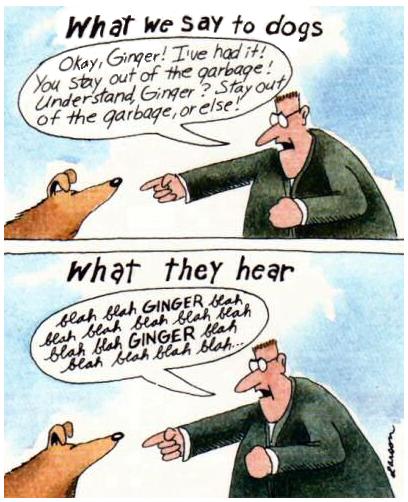 You know you do it. You talk at people, rather than with them. We all do. But is there a better way? Should we talk like Vikings?
You know you do it. You talk at people, rather than with them. We all do. But is there a better way? Should we talk like Vikings?
When we talk at people rather than with them, we are probably trying to be efficient with our communications. We have a clear image of what needs to be transferred into others’ heads, and we simply “download the data” for maximum efficiency. It’s like pushing the SEND button on an electronic communication and feeling satisfied that it was transmitted, received, heard, and digested correctly.
But why would we try to communicate AT people rather than WITH them?
The answer is that in our minds, we see a path to clarity – the way to efficiency, the truth – by communicating so directly. So, oftentimes we just simply “click to send” our message in haste without much concern or pre-thought for how that message lands or how effective our direct process might be.
 The problem with this type of one-way spewing is that we are not really communicating. We are only doing a verbal data dump on people. This doesn’t really work well because effective communication takes engaged people, not just a motivated person. We simply cannot communicate alone.
The problem with this type of one-way spewing is that we are not really communicating. We are only doing a verbal data dump on people. This doesn’t really work well because effective communication takes engaged people, not just a motivated person. We simply cannot communicate alone.
And, unless we have the vision, charisma, and oratory skills of someone like Dr. Martin Luther King, Jr., chances are that we will have to find better ways to ways to engage people to make our “data” stick.
A Better Way
When we take the time to consider effective communication methods, we are much more likely to get what we want from our efforts.
In short, communicate effectively to win.
In more thoughtful examples of communications, we tend to engage people through more meaningful dialogue. We get more buy-in and more collaboration.
Most of us never really learned how to “do” dialogue. Let’s look back at who did.
Direct communication methods are nothing new. In the Early Middle Ages, Icelandic tribal leaders who are descendants of Vikings met once a year in what is often referred to as the world’s first parliament, at Þingvellir. They didn’t communicate solely by messenger. They didn’t send representatives. They didn’t send emails. They came together in a circle, at the rift in the continental divide, to have real conversations.
Interestingly, the root of the word parliament comes from the French word “parler” (to speak).
I remember reading a description of the word discussion, likening it to the word percussion, a cacophony of sounds bouncing back and forth. This is a simple and rhythmic communication way to “exchange data.” A higher form of communication called Generative dialogue, on the other hand, creates something new from the shared wisdom of the individuals gathered.
Lead Like a Viking! Have Real Dialogue.
There are exemplary results stemming from real dialogue. Take the “Guggenheim of Garbage,” designed by Michael Singer and a team comprised of people from divergent backgrounds, like architecture, botany, and ethics. They’ve created projects that are functional, under budget, more ecologically sound, and amazingly, more beautiful. It would certainly take more than a tribal drum beat to pull off something like this!
Otto Scharmer, of MIT, outlines one dialogue process called Theory U. Otto shares that “Generative listening requires us to access not only our open heart, but also our open will — our capacity to connect to the highest future possibility that can emerge…You realize that by the end of the conversation you are no longer the same person you were when it began. You have gone through a subtle but profound change that has connected you to a deeper source of knowing, including the knowledge of your best future possibility and self.”
I know consultants that use NVC to foster deeper listening. William Ury – Co-founder of Harvard’s Program on Negotiation and Author of Getting to Yes – said “NVC is one of the most useful things you will ever learn.”
In times of economic crisis, it can be easy to see these processes as superfluous. But, it’s in times like these, that we need to work most effectively together by using real conversations to create real solutions. It’s Darwinian economics. It’s our Apollo 13 moment to create the best solutions.
How’s your team going to perform in the future? Are you sending surrogates like emails, memos, sticky notes, or worse to communicate on your behalf? What are you doing to engage your team and have real conversations? How are you going to lead like a Viking?
—————————————————-
Ashley Munday, Network & Thought Leadership, at Barrett Values Centre.
Ashley can be reached at [email protected]
Image Source: soapboxrants.files.wordpress.com

I think its a major culture shift, in the marketing world especially, because for so long the medium was purely a broadcast one. You had your message and you sent it out, often to as many people as you could with little to no idea about targeting.
Yet now we live in a world where two way communication is possible like never before. All of which opens up many more opportunities for marketers, but it does require them to let go of control, something many remain loath to do.
Great post Ashley!
Leadership through dialogue is very powerful but requires deep personal learning by the “leader”. High EQ is a must and this means letting go…..how do we teach future leaders to be vikings. And oh, lets not forget that letting go is not about losing strength and appearing weak….